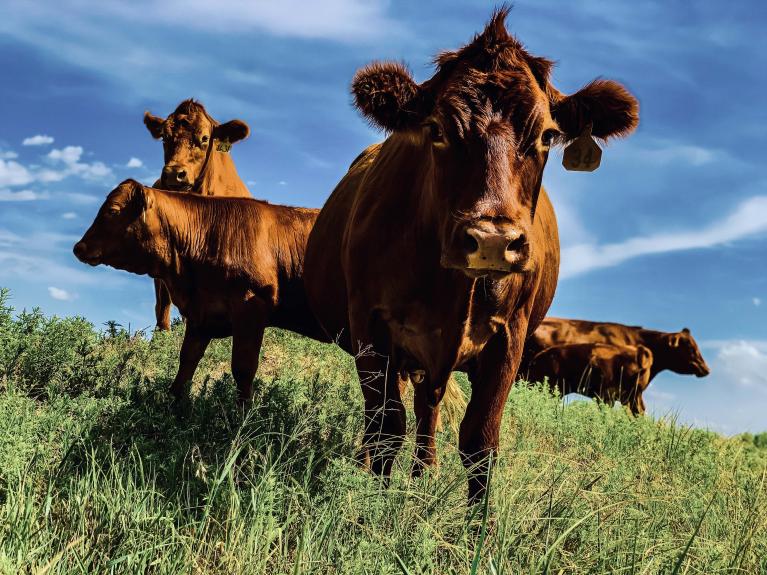Cattle Embryo Transfer Success Rates
Embryo transfers in bovine have had many uses over years especially in research. Size of superovulatory response.
A study published earlier this year by researchers at Stanford University found that in women over 35 with high progesterone levels frozen embryo transfers were 73 more likely to result in an ongoing pregnancy than a fresh transfer.

Cattle embryo transfer success rates. Miscarriage rate decreased. Evaluation of a large number of transfer in fresh and frozen embryos in The Netherland revealed 683 and 584 pregnancy rates respectively 3. 1987 reported a conception rate of 71 following transfer of 146 embryos recovered from cycling non-superovulated Holstein donors into Holstein heifers versus 73 for 2061 embryos transferred from superovulated Holstein donors with large responses of 16 or more ovaembryos.
In my hands over the years about 1 out of 4 or 5 of these problem recipients settle to the embryo. The overall pregnancy rate in this study was within commercially accepted limits for Grade 2 embryos at 382. Much like artificial insemination AI has increased the number of offspring males may produce.
Perhaps ETresults are mirroring normal reproductive performance - conception rates of Holstein cows are reported to be declining at the. Among those cows that successfully respond to the FSH treatment the variability in producing good quality embryos is very good from 0 to 20 per flush. A few of the more common uses of embryo transfer technology in cattle production are.
Usable embryo development rates at 30 every two weeks provides producers with the opportunity to produce on average 120 embryos per year if 18 to 22 oocytes are collected. For fresh embryos overall pregnancy rates were 683 n9023 and 771 n2650 at different locations and time periods. Embryo transfer has increased the number of offspring females can produce.
The effects of a large number of factors on the pregnancy rates of fresh and frozen cattle embryos were examined over a period of years at several different locations. Embryo quality has a large impact on the success of the program. Pretty positive results it seems but the authors point out some of the limitations of their study.
Embryo transfer ET in livestock is a concept that has been used since the 1930s to increase the reproductive potential of genetically superior animals. Consensus is that in most cases FET success rates are at least as high as fresh embryo transfer success rates. About 20 of donors fail to yield any transferable embryos at all The average yield of embryos is five per flush - but that can be made up of several ones and twos followed by a 12.
There are approximately 150000 eggs. A lot of failures in implantation are because of embryos chromosomal abnormalities. They must be on a proper plane of nutrition body score 6 for beef cows and dairy body con dition score 3 to 4.
Success Rate After Embryo Transfer Tips to Follow. The widespread use of this technology in cattle breeding schemes however is relatively recent. The pregnancy rates were 342 and 421 for the GnRH-treated and control groups respectively and were not significantly different at P 005.
For some women FET success rates can actually be much higher than fresh embryo transfers. Several factors contribute to a successful embryo transfer program utilizing in vitro-produced embryos. Once a patient has a poor quality of the egg resulting embryos arent healthy to the implant.
1245 with hCG vs 1856 without The best results came from hCG injections that were done embryo transfer using a dose of 500 IU. On average the costs can range anywhere from 300 to 600 per recipient when everything is factored in with 200 to 500 of that for the flush and another 30 to 75 to transfer the embryo. The study also reported there were no differences in the pregnancy rates of beef versus dairy embryos but the pregnancy rate.
Cows that are reproductively sound that exhibit calving ease and that have good milking and mothering ability are recipient prospects. It is expected that 7590 will respond to the superovulation treatment but 2030 of flushed cows do not produce embryos of transferable quality. The success rate of IVF implant depends on factors like uterus receptiveness and superiority of embryo.
How much does an embryo transfer in cattle cost. In this case the embryo used is usually one of lesser value possibly even cull genetics.
Pdf Forty Years Of Embryo Transfer In Cattle A Review Focusing On The Journal Theriogenology The Growth Of The Industry In North America And Personal Reminisces
Blastocyst Attachment And Implantation A Outcome Of Embryo Transfer Download Scientific Diagram
Effect Of Treatment With Human Chorionic Gonadotropin 7 Days After Artificial Insemination Or At The Time Of Embryo Transfer On Reproductive Outcomes In Nulliparous Holstein Heifers Journal Of Dairy Science
Evaluation Of The Factors That Affect The Pregnancy Rates During Embryo Transfer In Beef Heifers Alkan 2020 Reproduction In Domestic Animals Wiley Online Library
Economic And Genetic Performance Of Various Combinations Of In Vitro Produced Embryo Transfers And Artificial Insemination In A Dairy Herd Journal Of Dairy Science
Proposed New Protocol For Fixed Time Embryo Transfer Ftet In Cattle Download Scientific Diagram
The Use Of Artificial Insemination Ai Embryo Transfer Et And In Download Scientific Diagram
Animal Breeding Selected Articles From The World Animal Review


Post a Comment for "Cattle Embryo Transfer Success Rates"